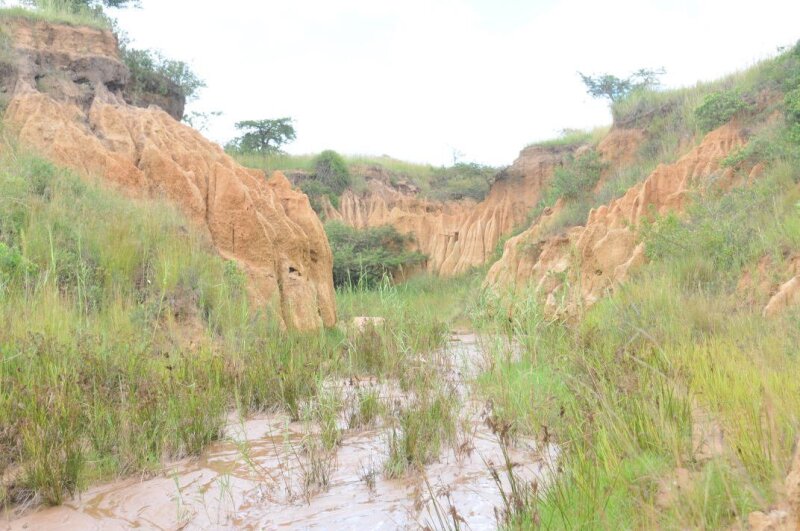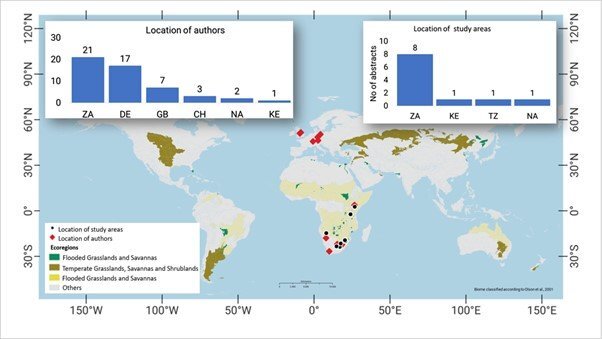The Figure provides an overview of the global distribution of savanna biomes, study sites and the ‚origin‘ of the scientists who submitted abstracts to the vEGU21 session “Land degradation in savanna environments - assessments, dynamics and implications“.
The black dots in figure 1 represent the study sites of the abstracts received. The study sites are located in the savannas in Eastern and Southern Africa. The Majority of the submitted abstract study sites is in South Africa. The abstracts were conducted in four countries in total (Kenya, Tanzania, South Africa and Namibia).
The red symbols in the figure represent the origin of the presenters and the co-authors of the submitted abstracts. An intercontinental pattern with authors and co-authors originating both from Africa and Europe can be observed on the map. This is a good indication and a clear representation of the scientific synergic collaboration between the southern and northern hemisphere, which illustrates an exchange of research ideas between the two continents. Furthermore, it shows that land degradation in African savannas is receiving a wider research interest strengthened by these synergies. This is indicated by the fact that, except for 2-3 abstracts, at least about 9 of the 11 abstracts received are written by co-authors originating from both the northern and southern hemisphere. The origin of the scientists authoring and co-authoring of the submitted abstracts came from countries such as Kenya, United Kingdom, Switzerland, Germany, South Africa and Namibia. About 53 % of all 11 submitted abstracts are written by scientists originating from the southern hemisphere and about 47 % originate from the Northern Hemisphere.

